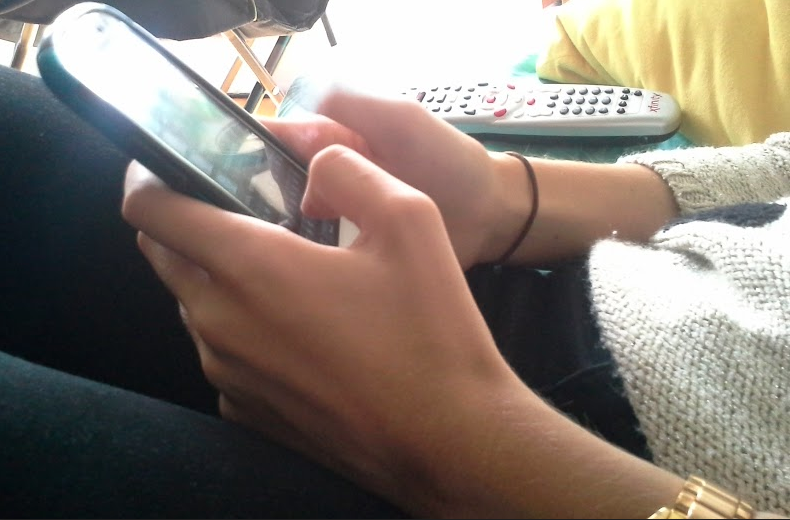With one click of a button, cell phone users can send a text, picture or video to that special someone and make it available to anyone.
As the recent leaks of explicit pictures of Jennifer Lawrence and other celebrities demonstrate, sexting poses a high risk of exposure. A 2014 study from the Pew Research Center showed 3 percent of all cell phone users have forwarded a text containing explicit material, while that number is 6 percent for all cell phone users between the ages of 18 and 24. Despite these risks, the practice of sexting – sending sexual text, picture or video messages with a cellphone – is still on the rise, especially among college-aged students.

The study found that 9 percent of all cell phone owners have sent a sext and 20 percent have received one, which is higher than a 2012 study that showed 6 percent of users sent a text and 15 percent received one.
Behavioral therapist Pouria Samimi, author of the study “Sexting Among Undergraduate Students,” said people sext in order to further develop their relationships.
“People are desperate for friendship and closeness,” Samimi said.
Junior Colin McGlennen said he believes sexting has become popular because people are not aware of the risks.
“I don’t think they realize the consequences that can come with it,” he said. “They think that they can delete it, and it’s gone.”
Sophomore Gretta Johnson, on the other hand, said she believes people are aware of the potential consequences, but it’s not their immediate thought when they make the decision to sext.
“They don’t think about it until it actually happens. There’s no like, oh, this might get on the Internet, and everyone’s going to see it,” Johnson said.
College-aged students in particular have shown they are willing to take the risk of sexting. According to Pew’s study, cellphone users between the ages of 18 and 24 are one of the age groups most likely to participate in sexting, with 44 percent receiving sexts and 15 percent sending them.
Samimi said part of the reason for sexting’s popularity among college students is the ease of technology. He said the younger generation is more likely to use technology, so they are more likely to sext as well.
McGlennen agreed and said students’ familiarity with technology makes it easy.
“We’re the most comfortable with technology,” McGlennen said. “No one else has really grown up with it.”
In addition to technology, Samimi said peer pressure plays a large role in why young adults – especially young women – sext. Johnson said she believes the pressure to sext comes mainly from young men.
“It’s more of a guy thing,” Johnson said. “I think girls do it because they think guys like it.”
Pew’s study showed that men and women are equally likely to send sexts, but men are 6 percent more likely to receive sexts.
Another reason why sexting is popular among college students is because it is often the time for people to try to develop new romantic relationships. According to the study, cell phone users who identify themselves as “single and looking” are significantly more likely to participate in sexting, with 23 percent sending sexts and 42 percent receiving sexts. For undergraduate students, Samimi said sexting has become a part of the early dating rituals.
No matter what the reason is, Samimi said it’s important for college students to know its advantages and disadvantages.
“On the one hand, they should know that once a message is sent, they cannot take it back,” Samimi said. “On the other hand, they can use sexting to boost their confidence.”
Johnson said she thinks sexting is appropriate in the right situations, for example, between two people who are in a committed relationship.
McGlennen said he does not think it is appropriate because it can negatively affect people’s futures and how others view them.
If, in the end, students do decide to sext, McGlennen said she thinks people should first consider the consequences before hitting send.
Rebecca Mariscal can be reached at mari2162@stthomas.edu.

